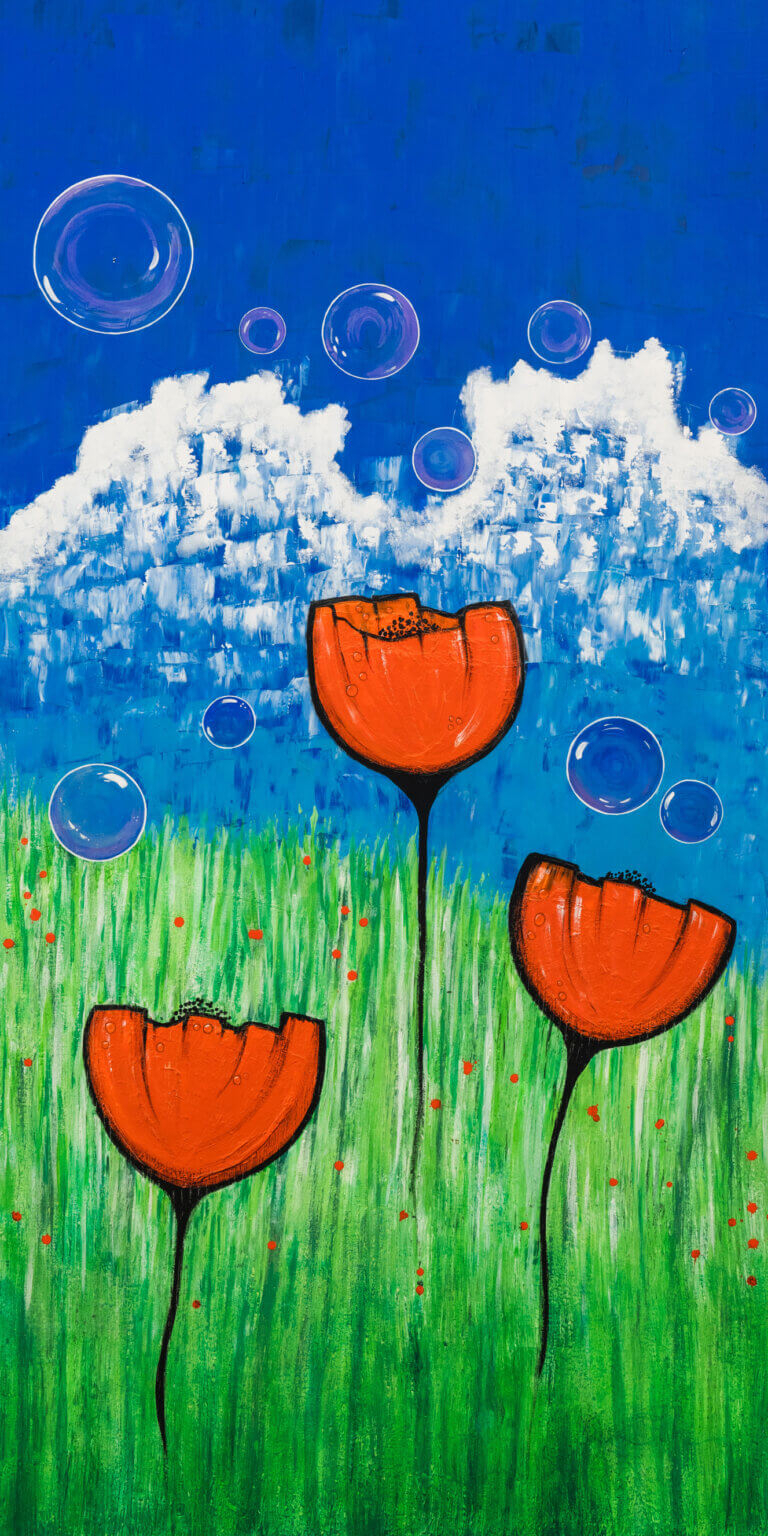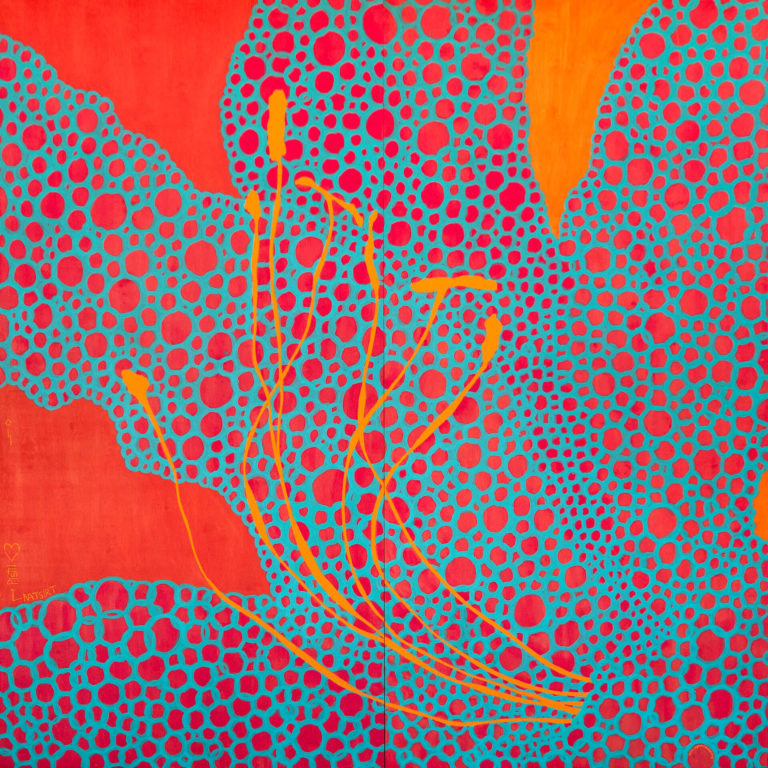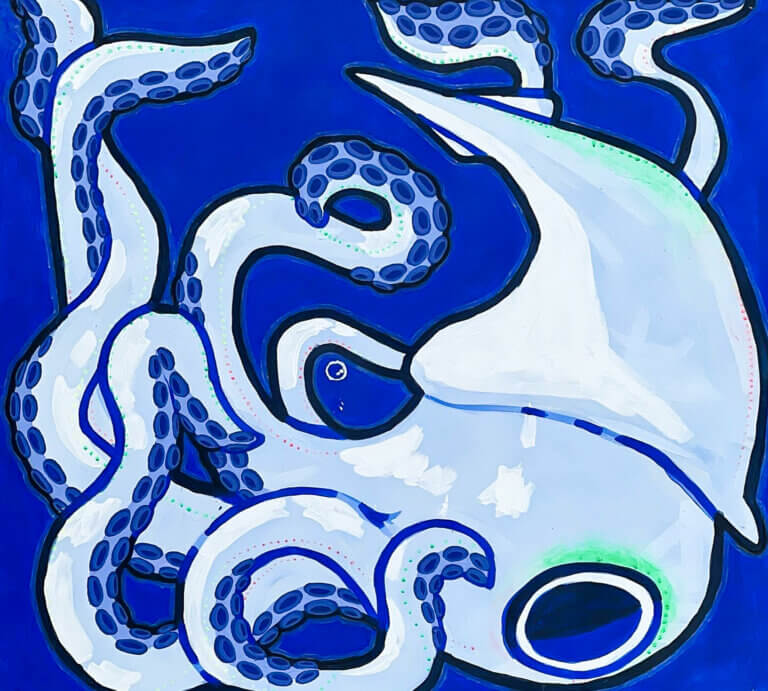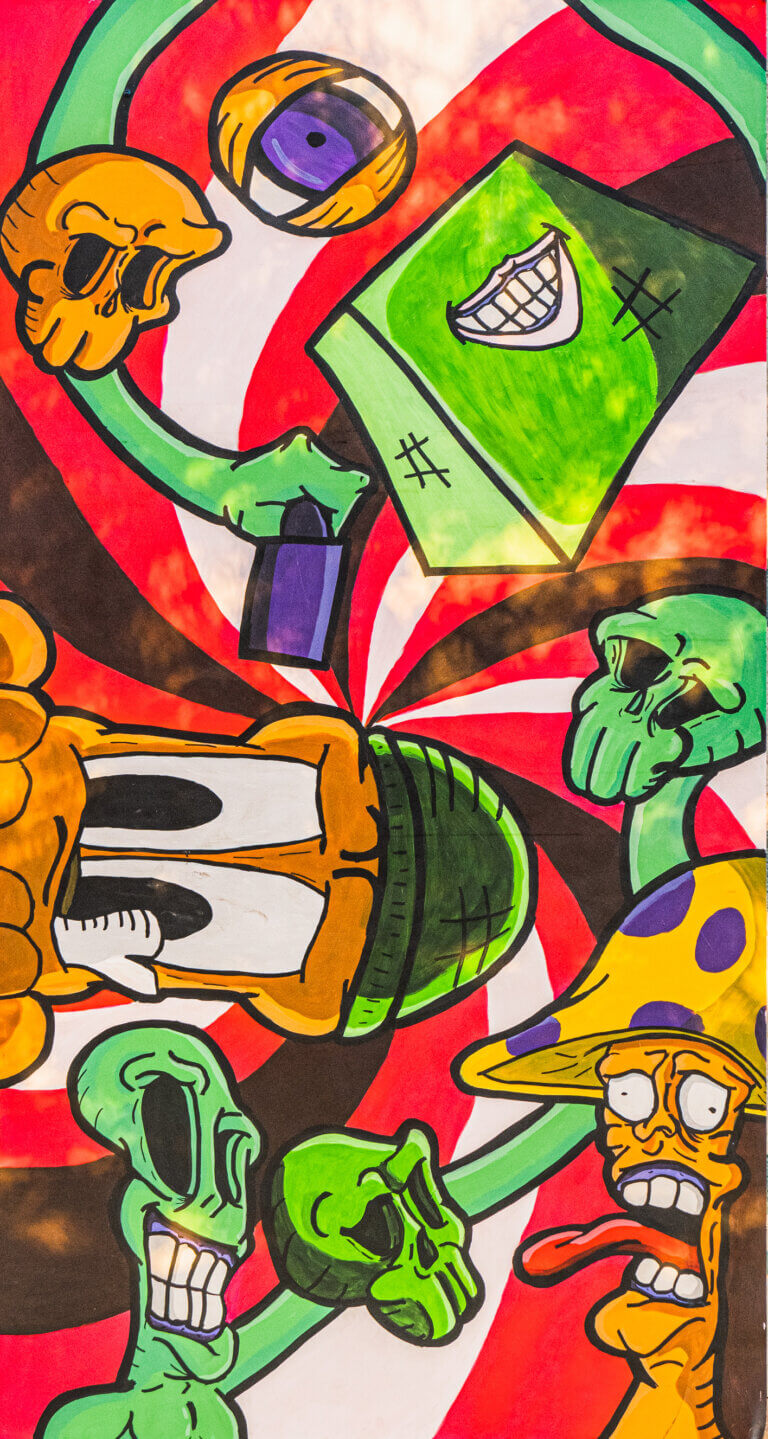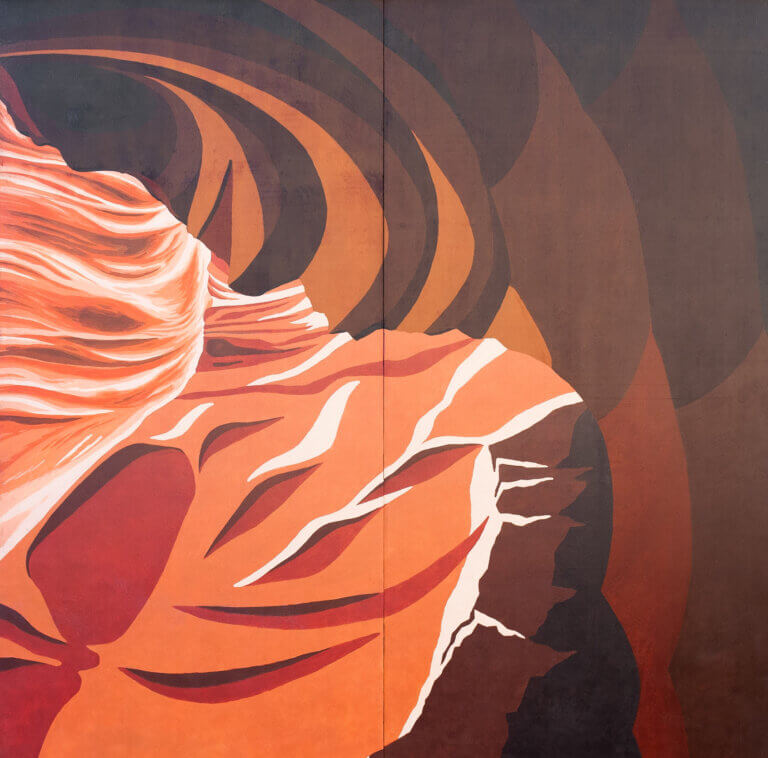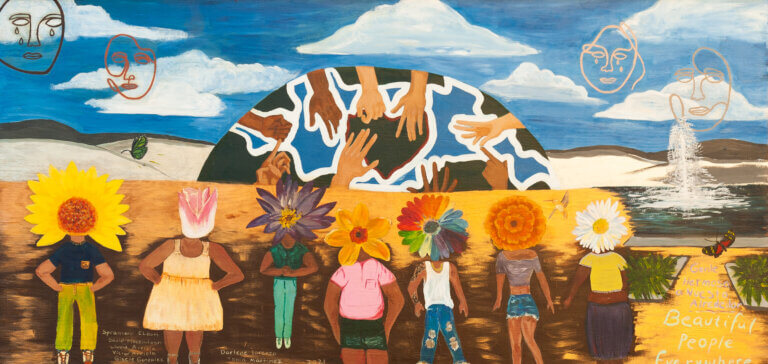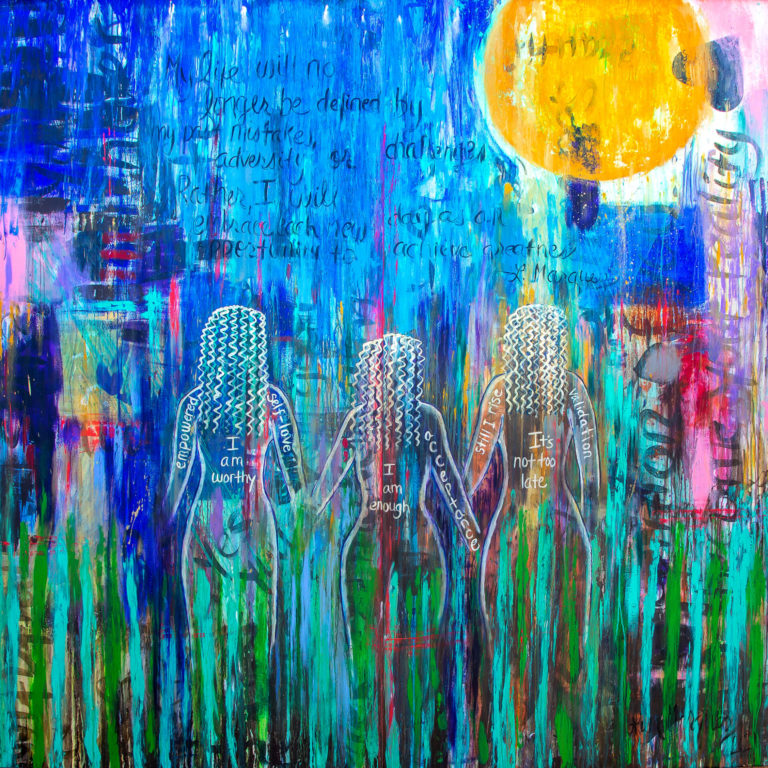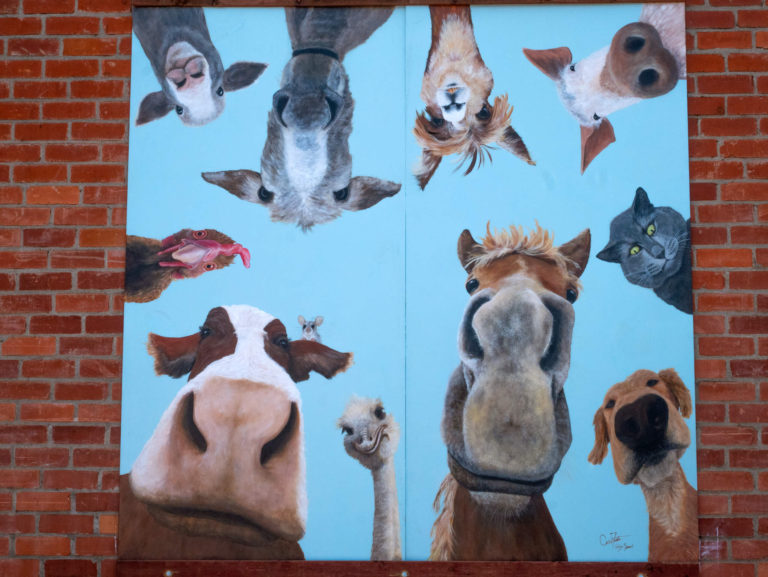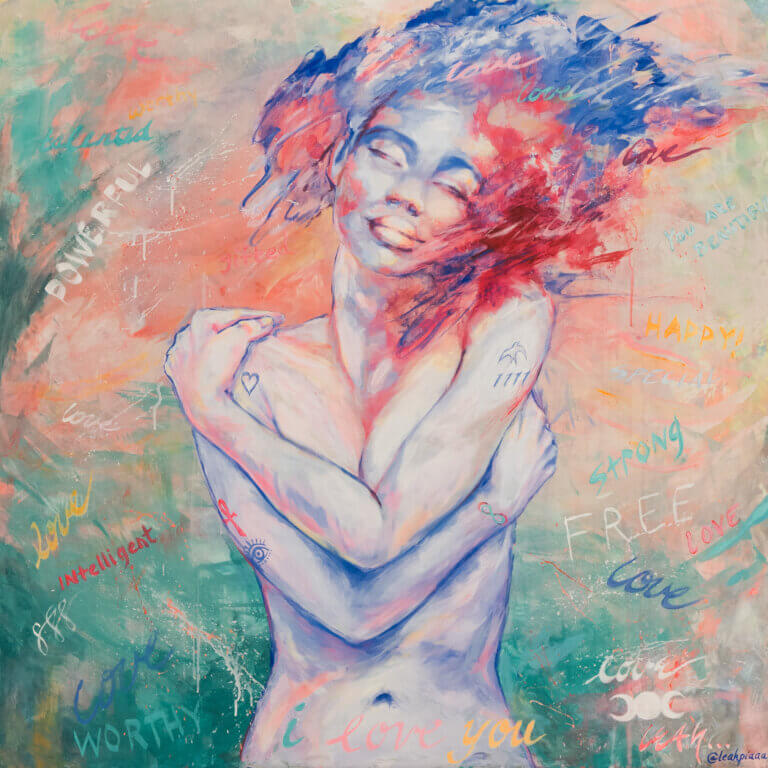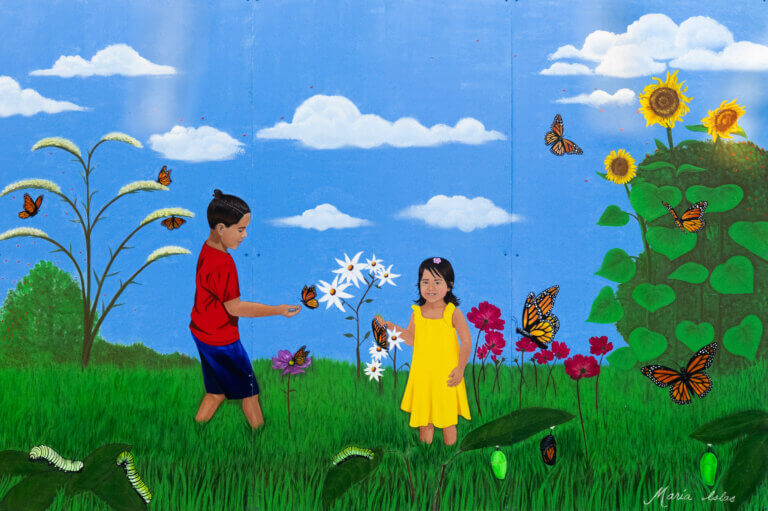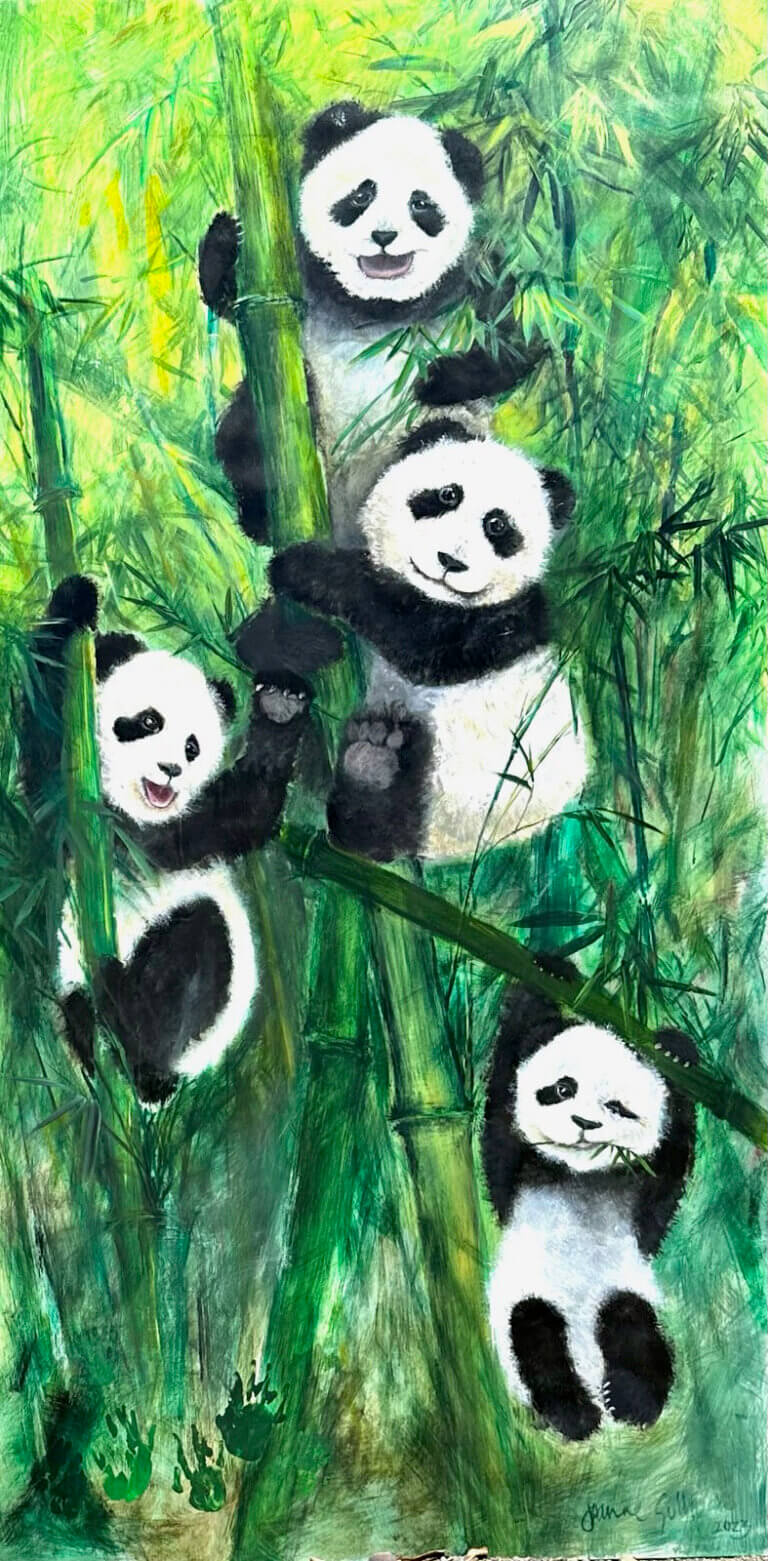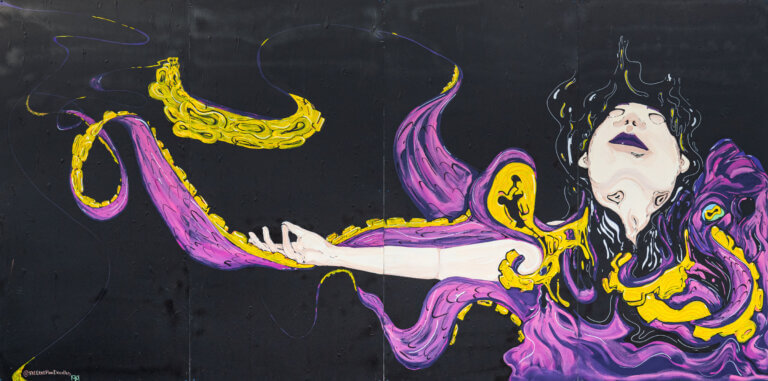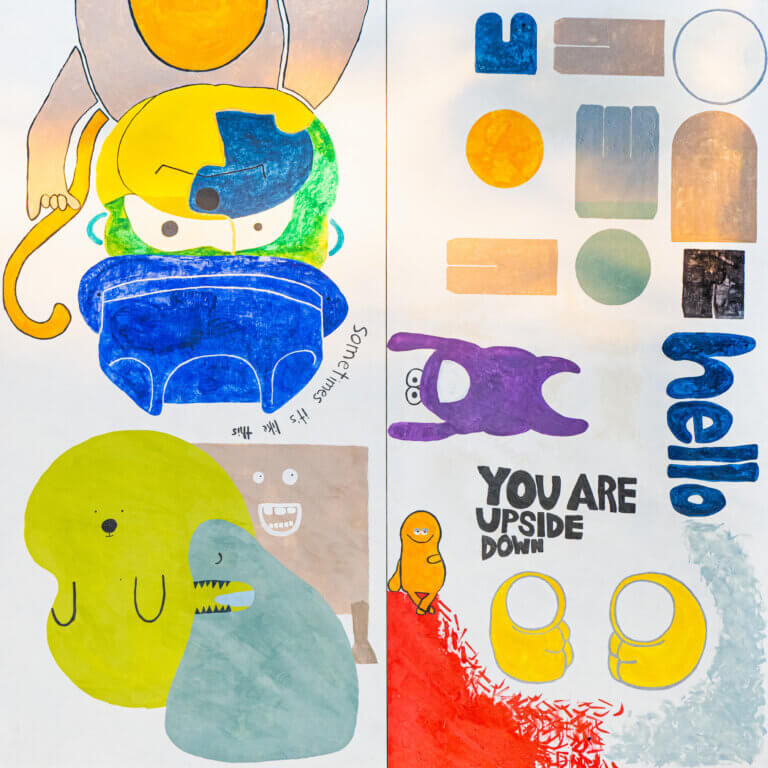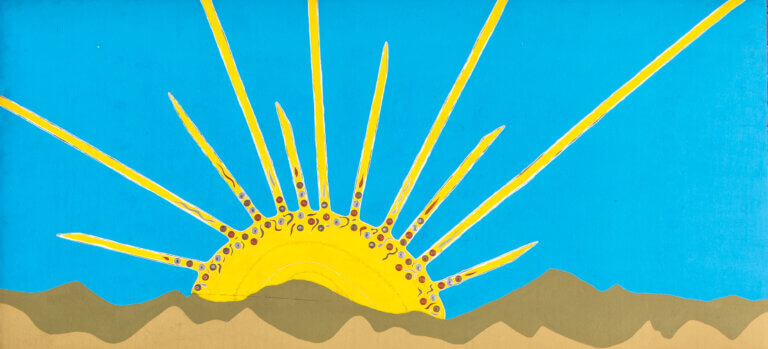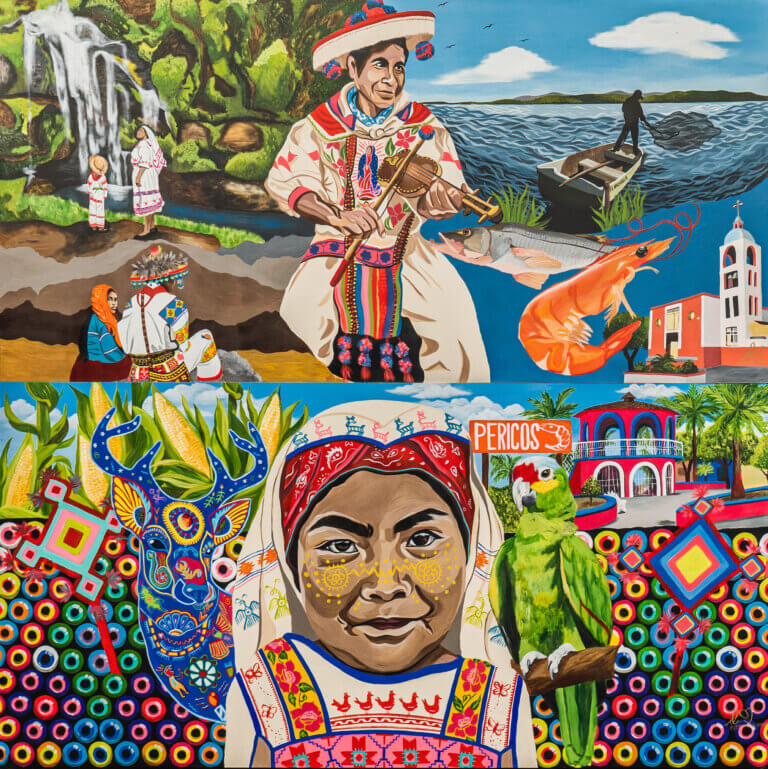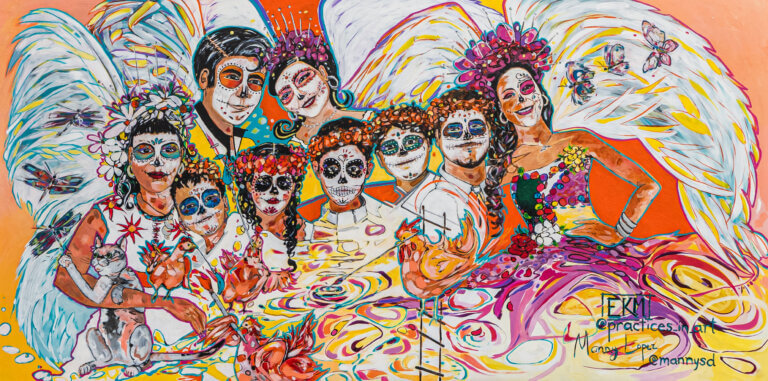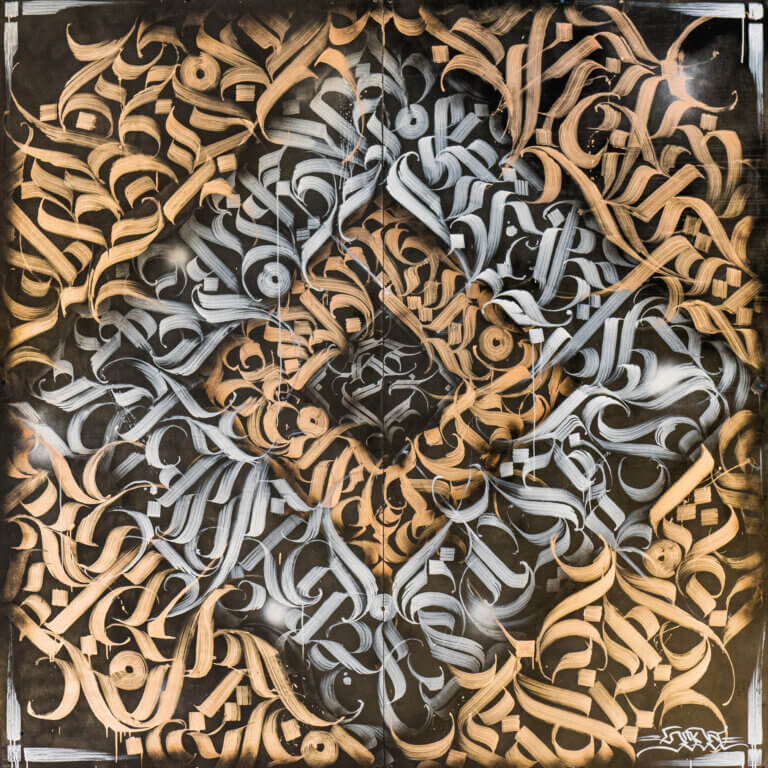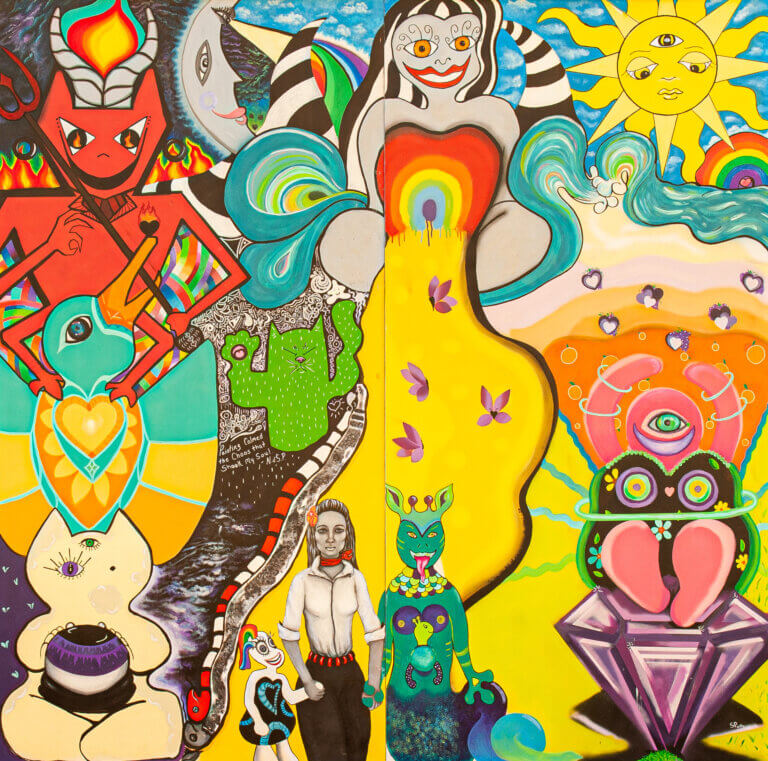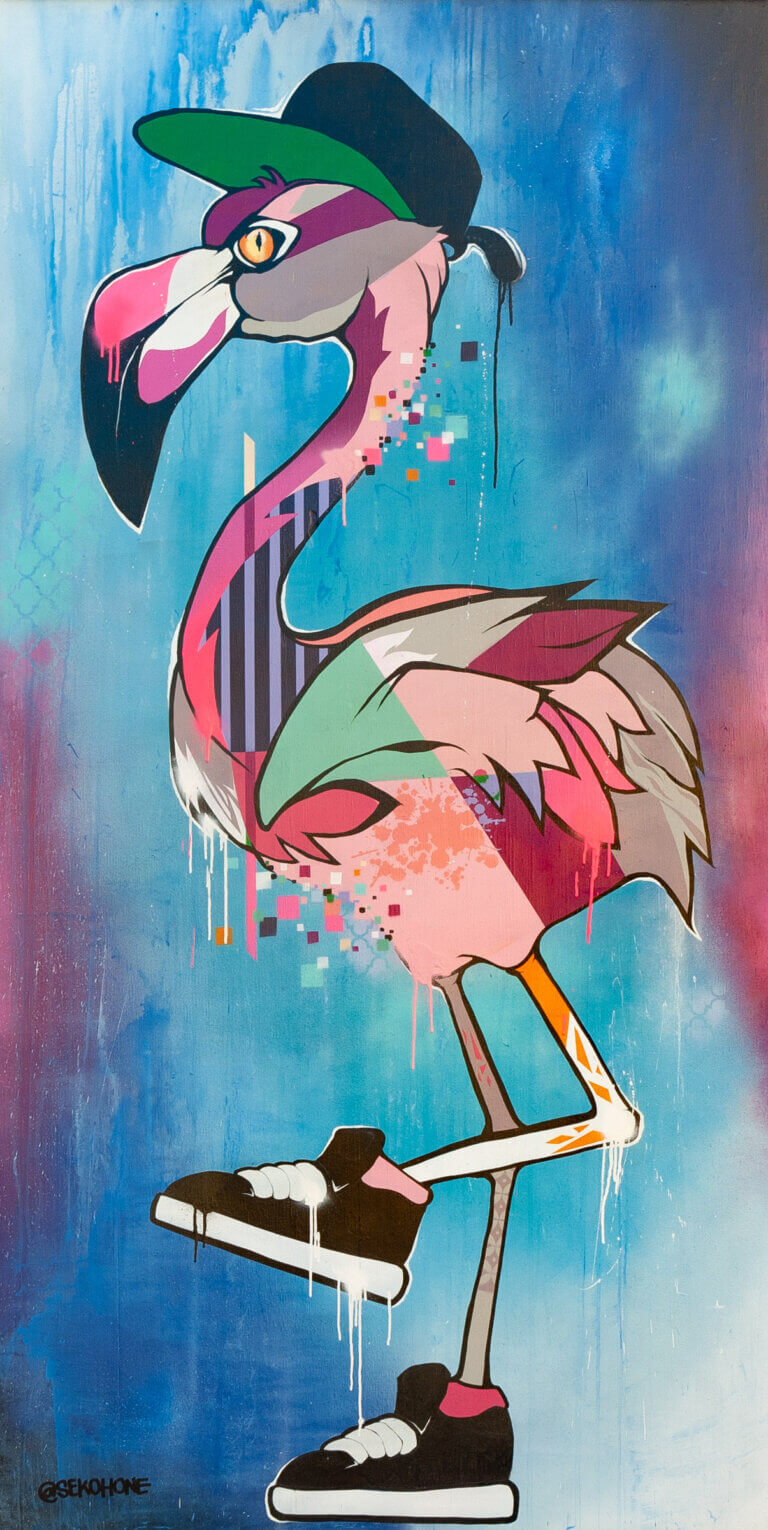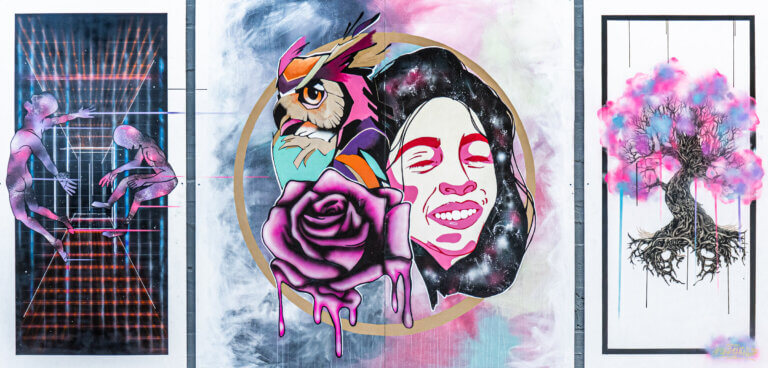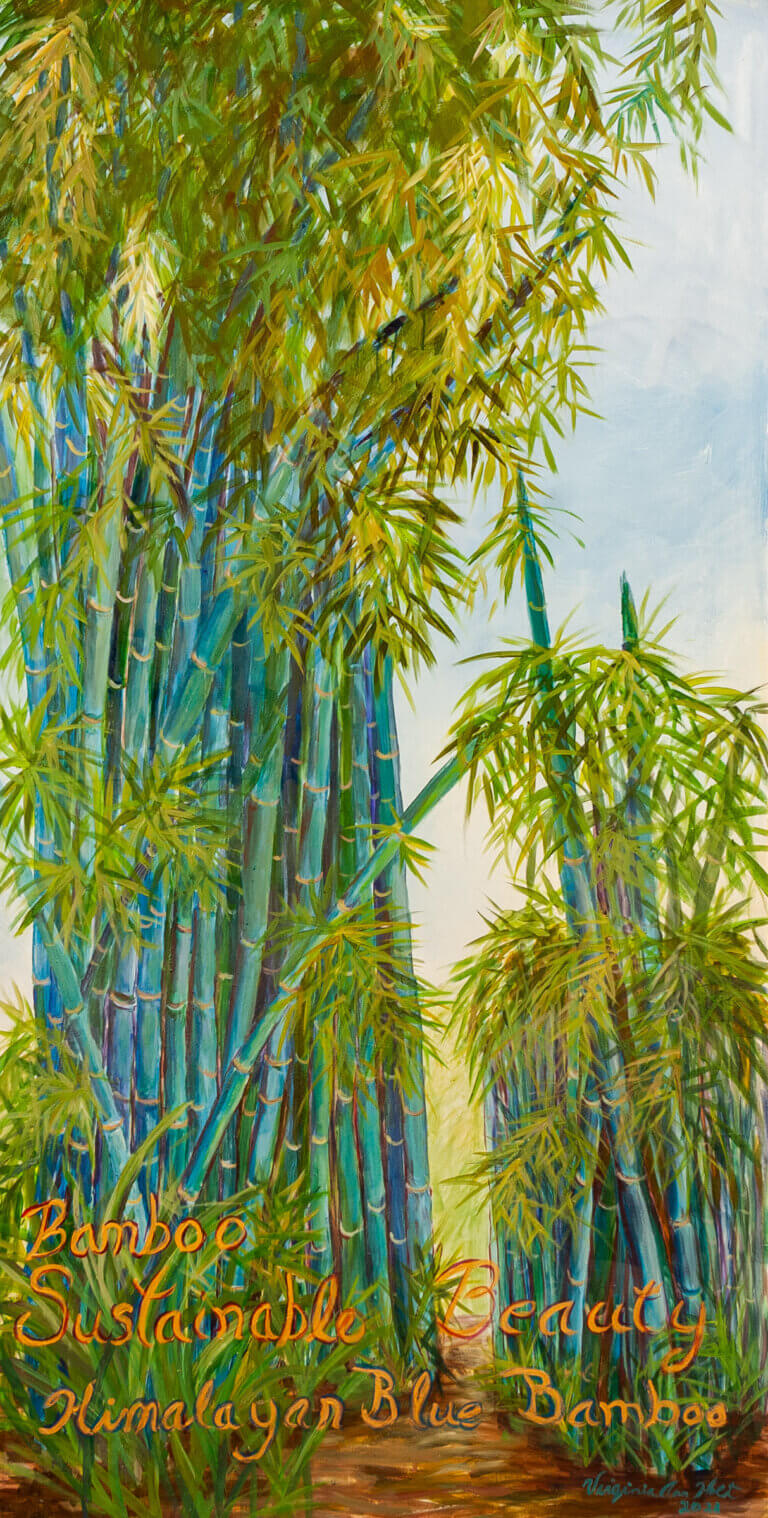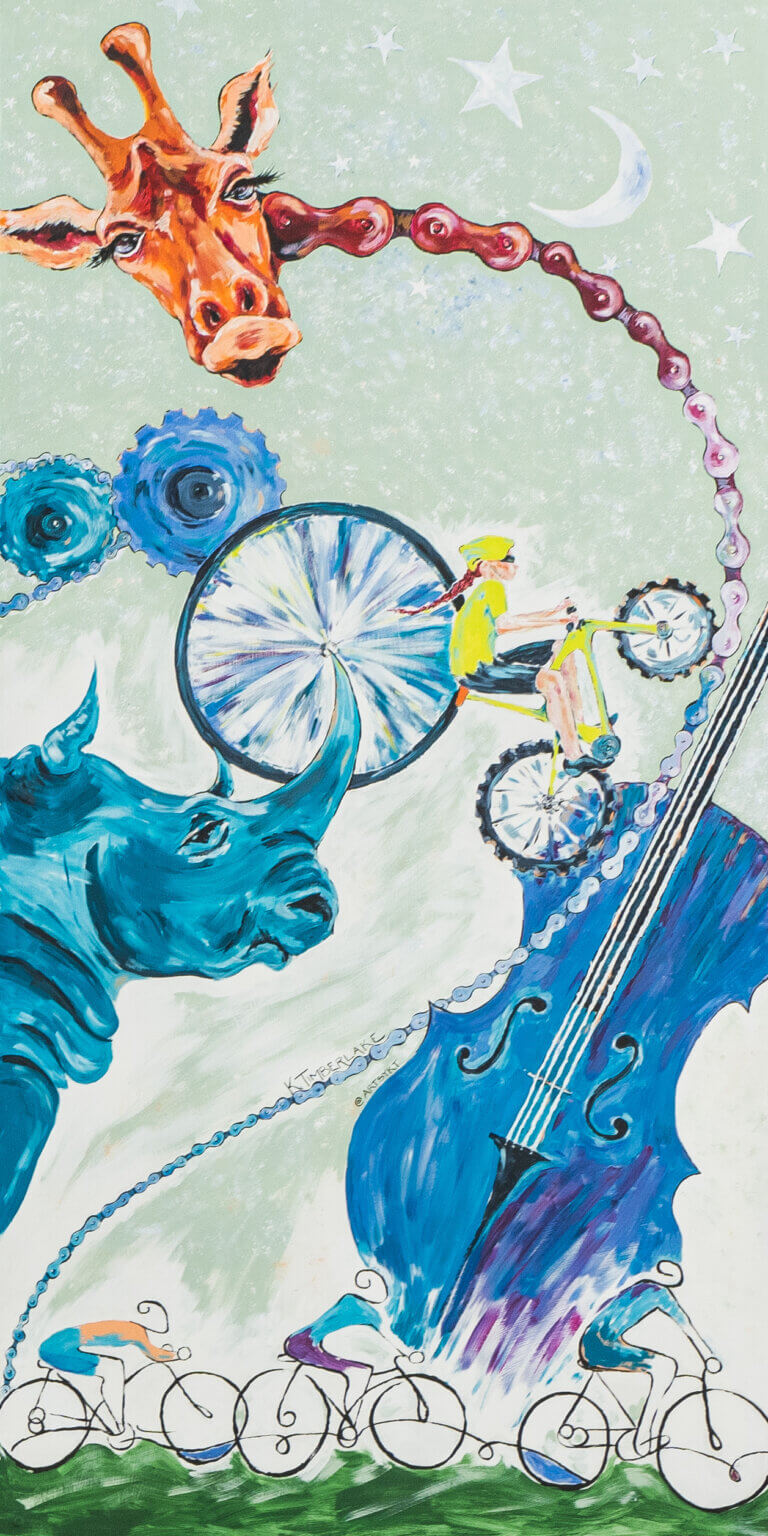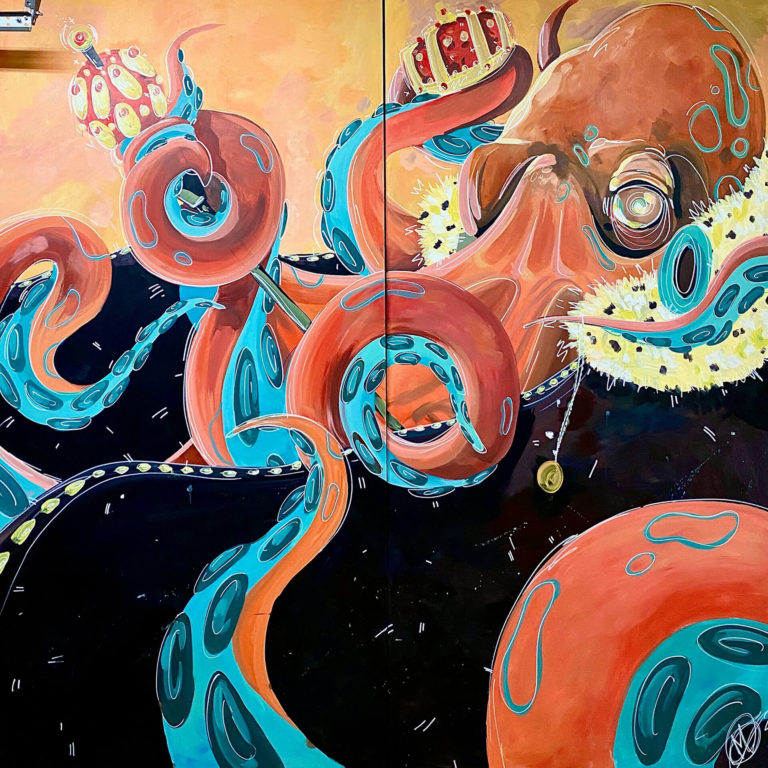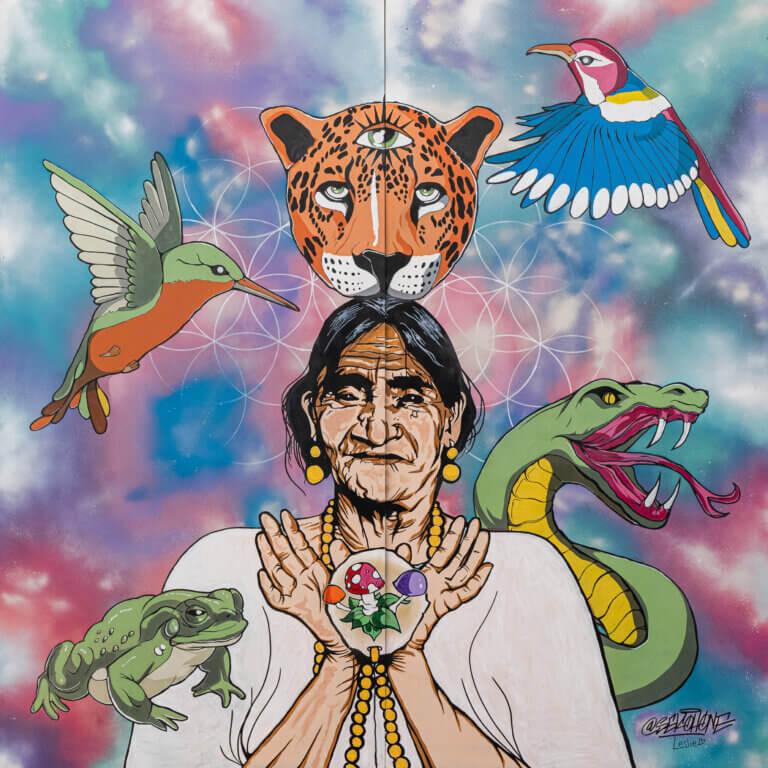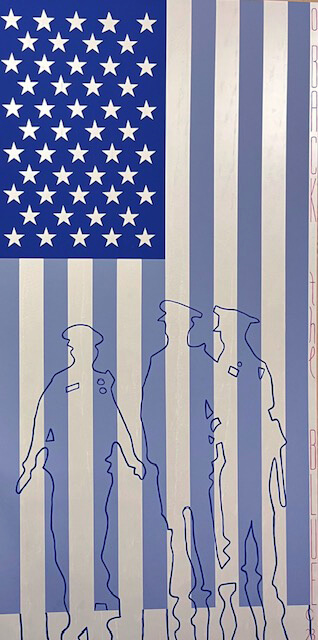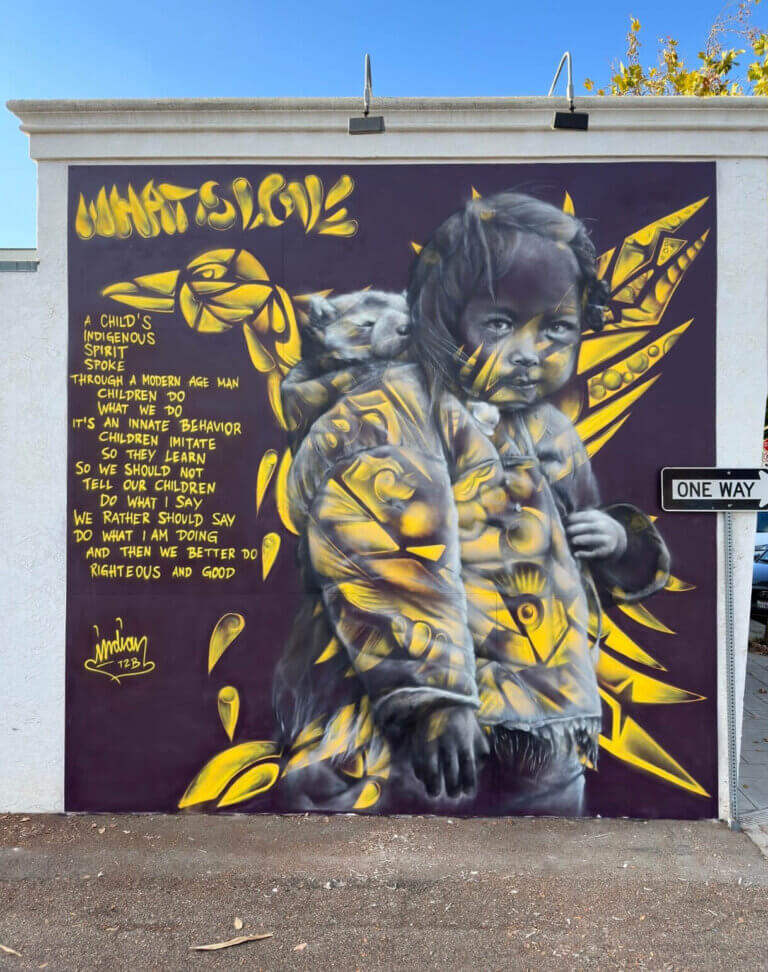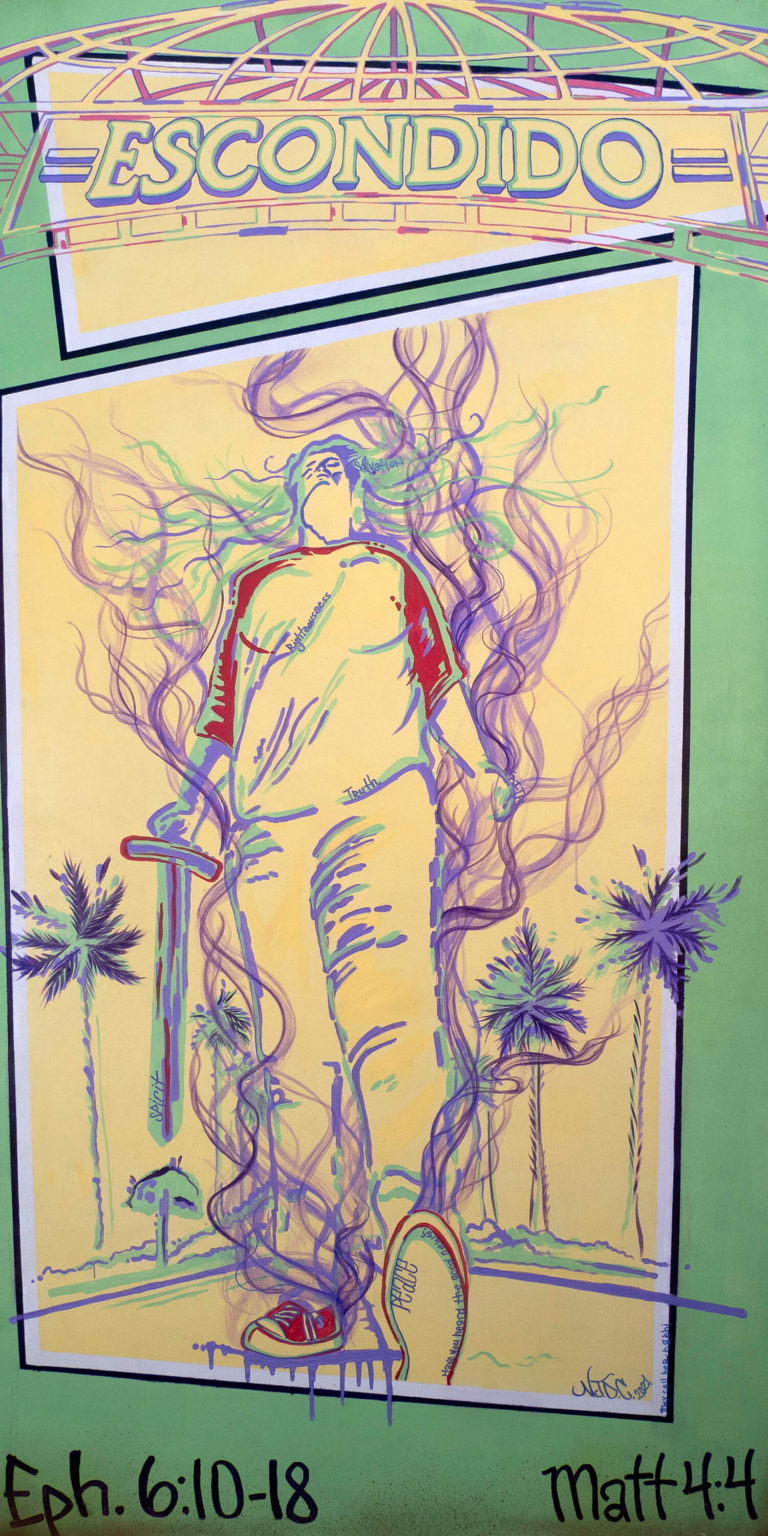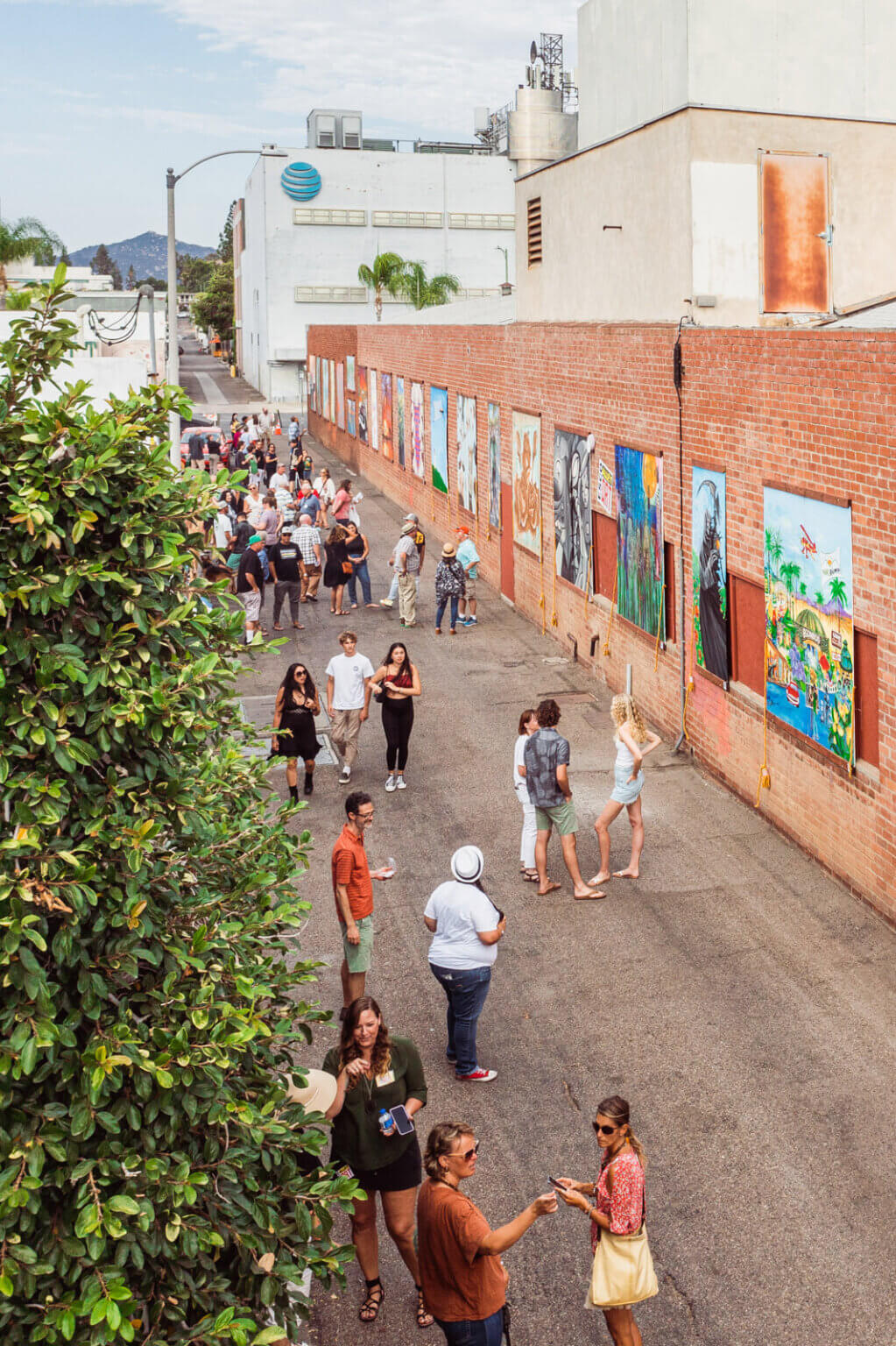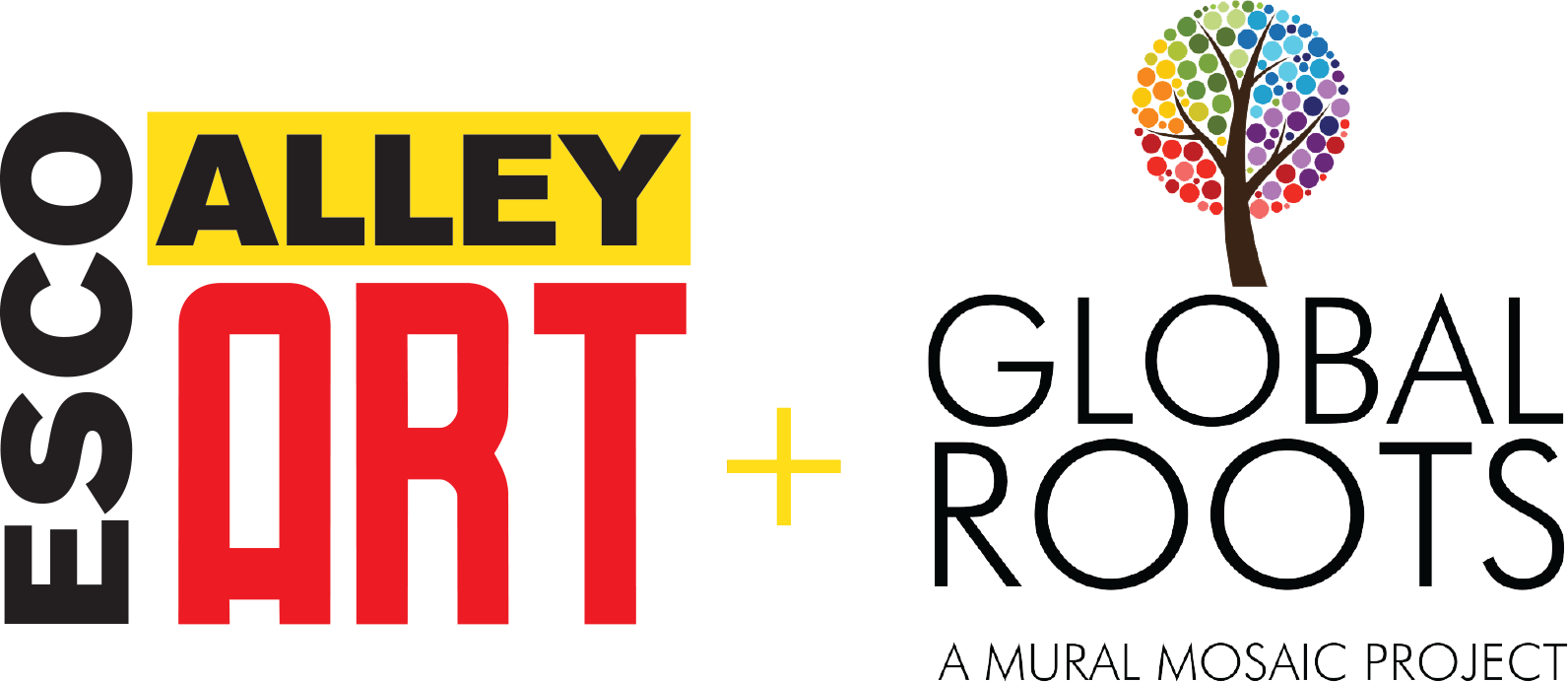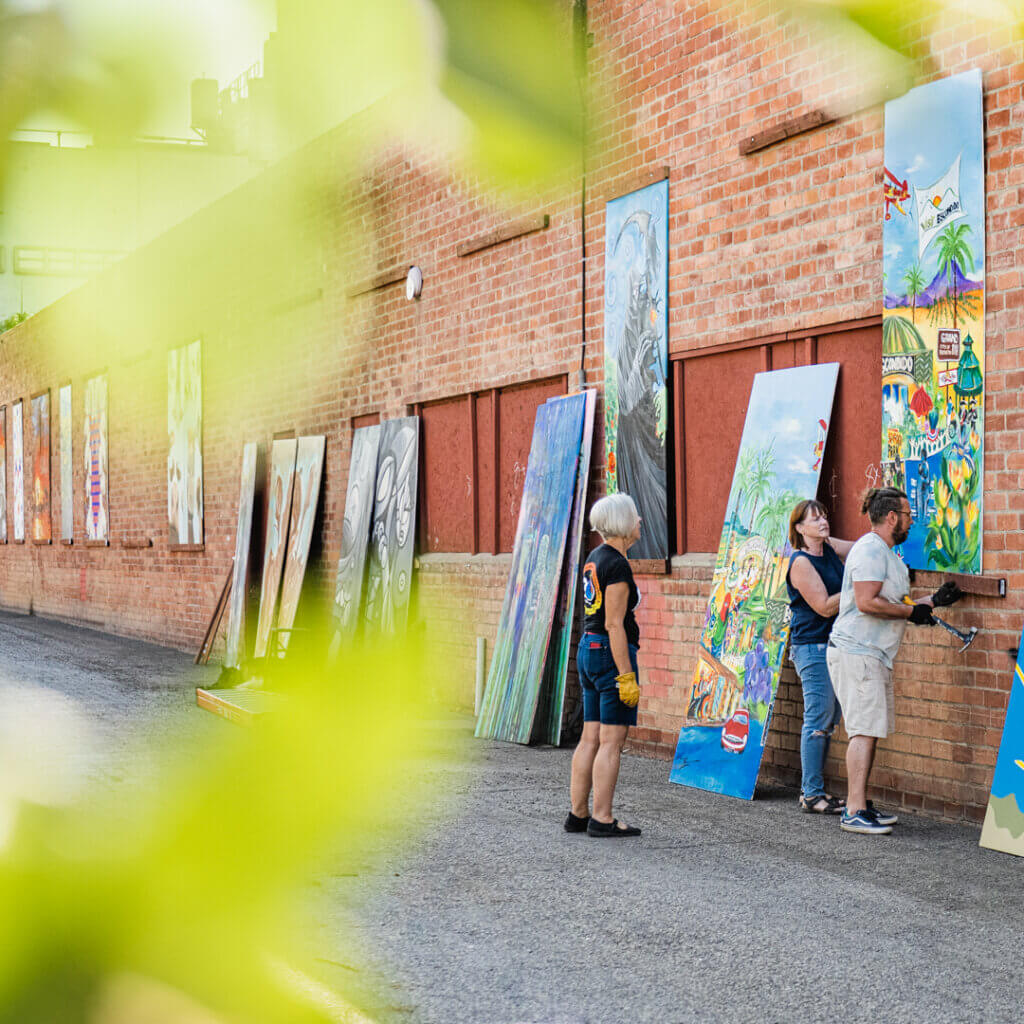“I am of Mexican descent, a second-generation Mexican American with some Apache ancestry. I do a lot of Chicano art. I have traveled there, met with the people and spent some time in Mexico, Central and South America.
My painting was inspired by an embroidery style called “Tenango,” made by a group of people called Otomi. They embroider in this style. It is extremely specific and native to that region in the Tenango de Doria municipality of Hidalgo Mexico.
My art is inspired by what is indigenous and by my connections in life to my ancestors, to earth, my travels and whoever I meet along the way. It is all based on my experience in the world. I want to honor what is native and original reflected in my painting.
I wanted to use bright colors. I thought it would be great for the alley where typically it may be dark or dingy reserved for the trash collection. It is nice to create and find art and joy wherever you are. The bright colors evoke a sense of joy for whoever passes by and looks at it. I was thinking especially about kids.
I want people to connect with my work. We are trying to revive downtown Escondido and bring in families and kids. It is my hope to inspire them and attract them to art to help them grow and expand.
The embroidery inspiring this piece is a simplified version of embroidery done for centuries. Pieces generally have multiple figurative elements in stylized form, which are arranged onto the fabric in a geometric pattern, mostly or completely symmetrical. The most common elements are the flora and fauna found in the Tenango de Doria area including chickens, dogs, wild birds, rabbits, horses, flowers and trees. Sometimes people and other objects appear as well. Other figures include figures from amate paper cut outs made by local shamans/healers and prehistoric paintings found in local caves. These elements are most often arranged in a pattern but can be set up to form scenes from daily life, folk festival and religion. The most common background fabric colors are white and off-white, generally for tablecloths and the like, followed by black, but other colors such as reds and blues are used as well. Most often, the elements are not done in realistic colors, rather using bright colors such as yellows, greens and blues. All elements may be of a single color, or multicolored. If the latter, the colors are most often combined as a series of stripes over the elements. Better tenangos have small, tight stiches, with a well-done tablecloth or bedspread taking up to six years to make.* Source Wikipedia.”
_____
“Julia Martinez is a Southern California artist born and raised in Riverside, now residing in San Diego. She paints in several mediums including sumi-ink, acrylic and oil. Painting is her voice as an empowered woman. Her work is often inspired by childhood memories, connections to people, guides and ancestors, spirituality and nature. She especially enjoys creating pieces that help her work through past and present challenges in life to nurture others, her soul and the universe.
“Life is a continual balancing act where light and darkness dance together. One cannot exist without the other. My works represent the journey deep inside to shine light on the dark parts so that they no longer dominate the light. Fear is released through shaking hands with the dark. Wholeness is achieved by exposing and embracing all parts.””

